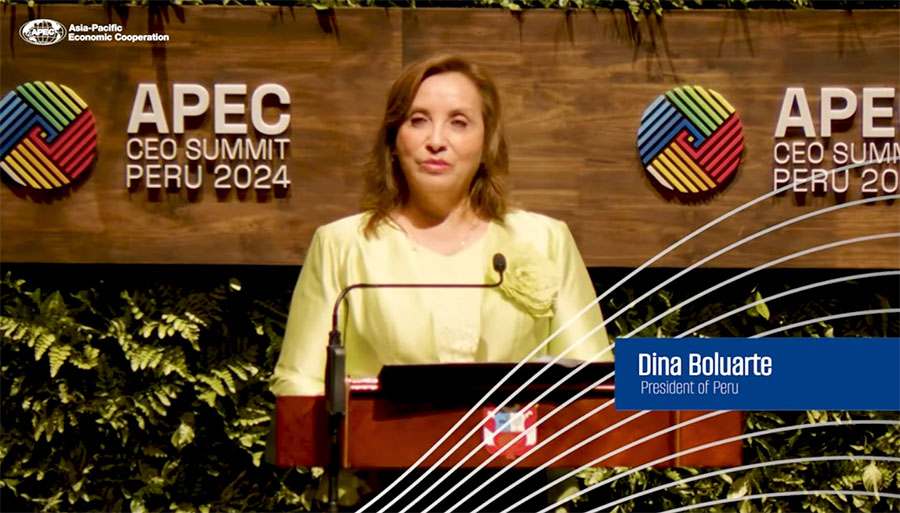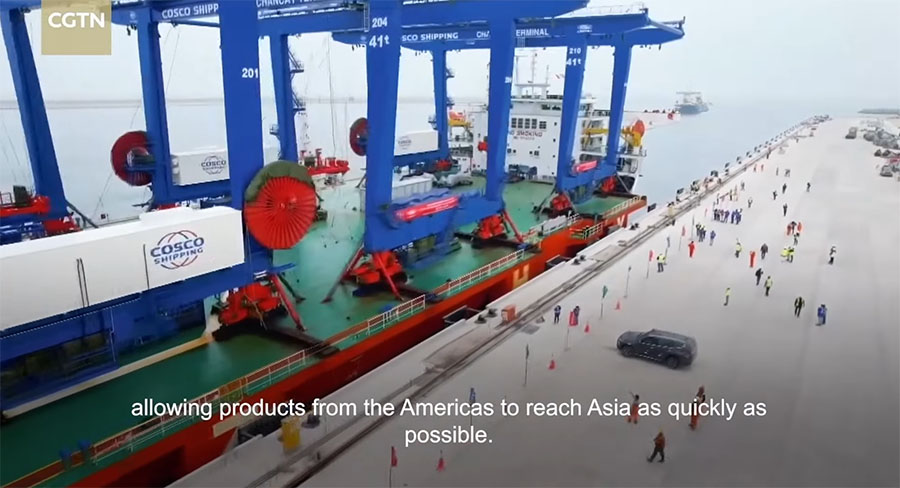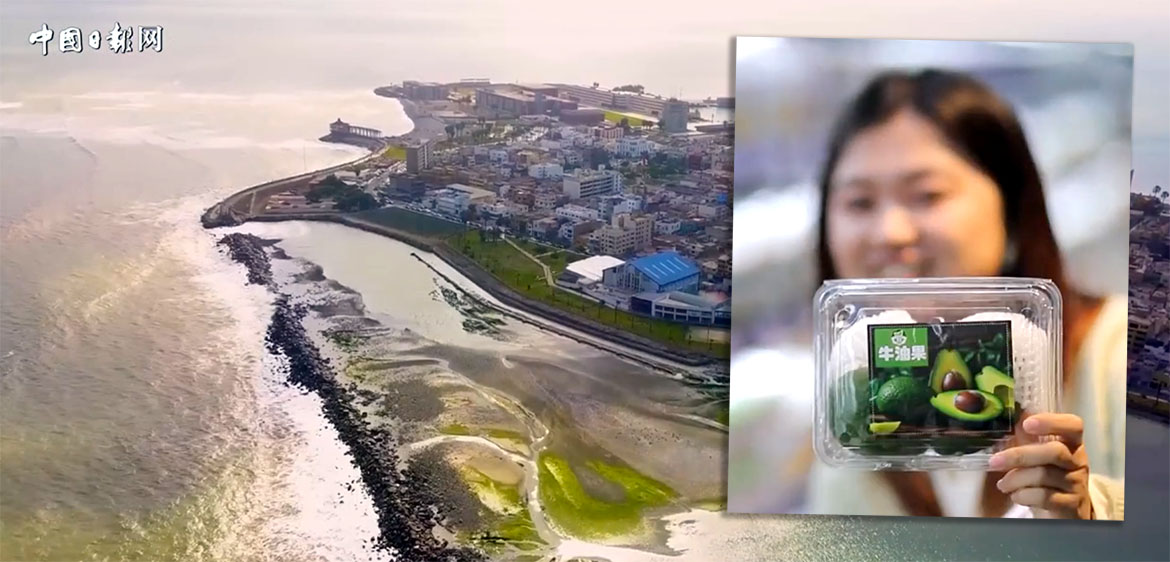As nations converge in Peru for the 31st Asia-Pacific Economic Cooperation (APEC) Economic Leaders’ Meeting, the spotlight is on China’s role in enhancing the Asia-Pacific Economic Integration as the BRI project Chancay Port opens South America to China and Asia.
Established in 1989, the APEC forum includes 21 member economies and has been instrumental in shaping economic policies in the Asia-Pacific region.
This year’s gathering, amid global economic challenges and rising protectionism, aims to reinforce APEC’s commitment to inclusive growth, sustainability, and enhanced trade relations.
”Our vision is an open, dynamic, resilient and peaceful Asia-Pacific community by 2040, for the prosperity of all our people and future generations.” – APEC
Analysts, including Cui Shoujun from Renmin University of China, have underscored China’s significant influence within APEC. ”China’s presence helps enhance the voice and influence of Global South countries in multilateral platforms,” Cui explained, emphasizing China’s commitment to equitable global governance.

China Daily writes that China’s proactive stance is vital in navigating the current economic uncertainties, promoting solutions in the digital economy, green development, and fostering cooperation among member economies.
This year’s agenda focuses on trade facilitation, investment for inclusive growth, innovation, digitalization, and sustainable development, aiming to craft actionable strategies that could redefine the region’s economic landscape.

Deep Water Chancay Port Inaugurated
The APEC meetings in Peru are not just a diplomatic event but also a testament to the growing economic ties between Asia, especially China and Latin America. The recent inauguration of the Chancay Port, a significant project under China’s Belt and Road Initiative, symbolizes this deepening relationship, China Daily explains.
The city of Chancay was founded in 1562 by Spanish colonisers on the shores of the Pacific. SMCP.com explains that it takes its name from a civilisation that inhabited the region before the Incas. The project is the fruit of a partnership between Cosco and the Peruvian company Volcan, one of the largest mining companies in the world. In 2019, the giant Chinese state-owned company Cosco began the construction of the seaport.
This port, expected to significantly cut shipping times and enhance Peru’s role as a trade hub, was highlighted by local expert Alejandro Indacochea as a historic moment for Latin America’s integration with Asia.
From the Pacific Basin Economic Council, Michael Walsh pointed out that APEC’s efforts in streamlining customs, reducing tariffs, and fostering digital infrastructure are crucial for boosting trade flows. ”We anticipate actionable strategies from these discussions,” Walsh noted, aiming for equitable resource distribution and opportunity across the region.
”The optimism is so great that Xi told Peruvian President Dina Boluarte in June that – from Chancay to Shanghai – is now a popular term in the Chinese business community,” SCMP writes.
”In Peru, China is involved in several port projects. These projects are not only significant for Peru in terms of their economic and social impact, but also hold great importance for all of Latin America, offering substantial opportunities for development, said Antonio Florez, a Peruvian living in Beijing,”, China Daily writes.
China is Peru’s largest trading partner. The countries signed the free trade agreement in 2009. Chinese are nowadays able to buy Peruvian products in China, like different foods such as avocados and blueberries (Peru is now the main supplier to China of these fruits). In 2024, the imports from Peru reached over 25 billion US dollars. That is a 6.4% increase since 2022, as reported by China Daily.
A temporary legal dispute between Peru and China was resolved in June 2024 when the Peruvian government formally withdrew its legal petition to block Cosco from having exclusive rights to operate the Chancay port.
Global South Solidarity and Economic Strategies
As Cui Shoujun mentions, China’s advocacy for a more robust representation of developing nations within global financial systems through platforms like the G20 resonates with many in the Global South, fostering a shared purpose in seeking development and justice. China Daily writes that this solidarity is seen as a step towards building industrial resilience and achieving sustainable development goals.
Historian Renzo Burotto from Chile emphasized the egalitarian nature of APEC, where ”all members are treated as equals,” highlighting China’s role in promoting cooperation over competition. This approach, he believes, could lead to solutions in socioeconomic development that benefit the entire Asia-Pacific community.
The Asia-Pacific Economic Integration Continues
As the APEC summit progresses, the focus will be on how the APEC forum can adapt its strategies to include nonmember economies, facilitating their integration into global trade networks through sectors like green technology and semiconductors.
Experts like Robson Cardoch Valdez from Brazil see this as an opportunity for broader economic inclusivity and dialogue across cultural divides.
China Daily concludes that the outcomes from this APEC gathering could potentially set precedents for regional cooperation. Initiatives could lead to new trade agreements and enhanced economic ties, particularly with China’s increasing regional economic footprint.
Summary by T. Sassersson, NewsVoice
Sources
- APEC: Apec.org
- China Daily: Expert: China’s role at APEC to boost Global South, world economy
- China Daily: APEC gathering seen as gateway for trade between China, Latin America
- China Daily: Basic facts of APEC
- SCMP: Port of entry: Peru’s Chinese-built megaproject is poised to reshape Pacific trade
- First Post: Chinese President Xi Jinping Inaugurates Chancay Port in Peru on Sidelines of APEC Summit
- SCMP: Peru’s Chancay Port nearing completion

